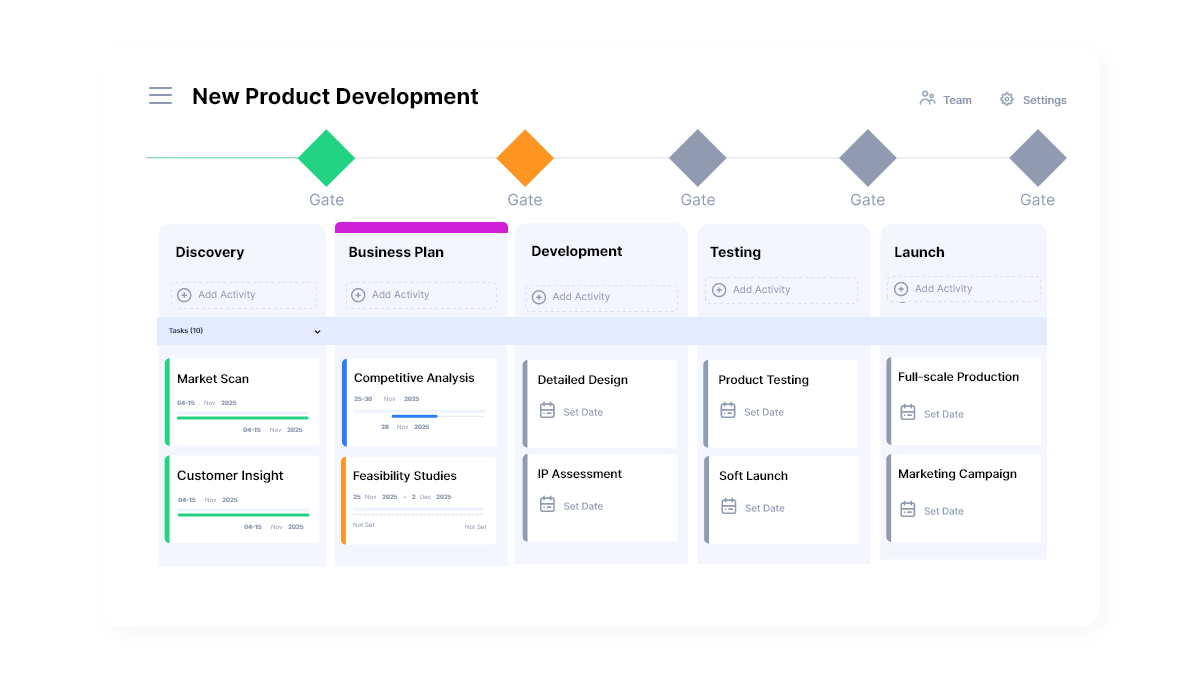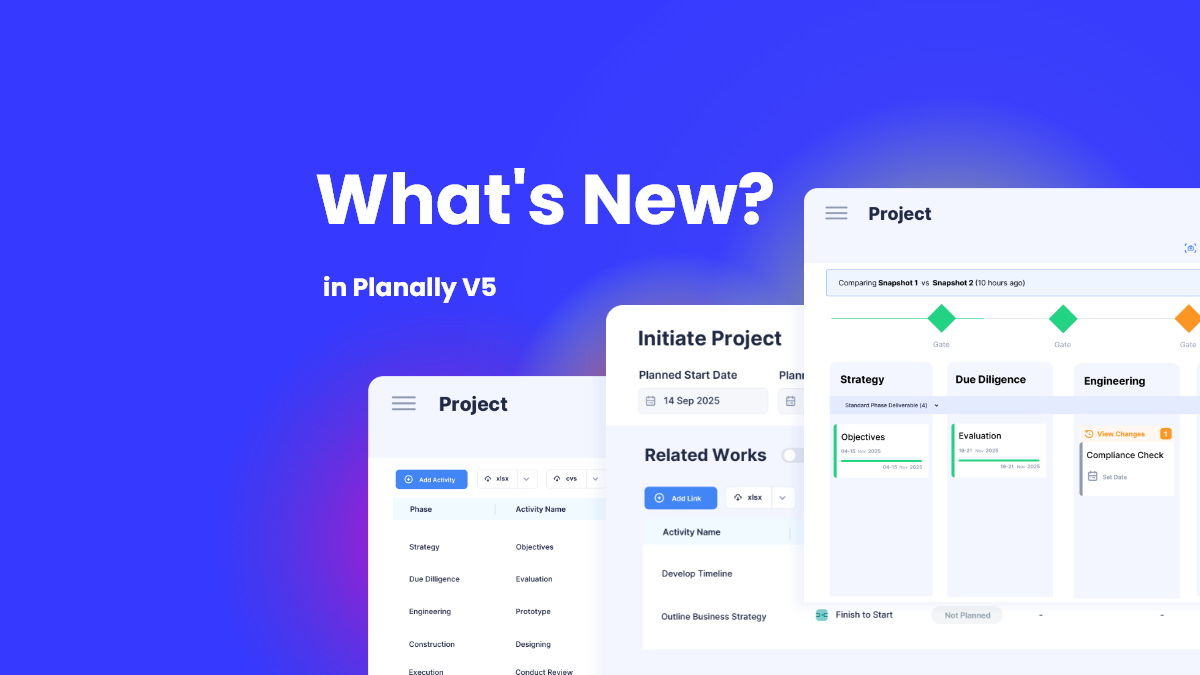
How a Stage Gate Workflow Helps in the New Product Development Process
Developing a new product and bringing it to market is an interesting but complex process. From idea generation to the launch of a final product, firms must navigate multiple steps while minimizing risks and optimizing resources. That is where a stage gate workflow (also known as a phase gate process) enters the scene.
What Is a Stage Gate Workflow?
A stage gate workflow is a structured approach to product development management. It breaks down the process into individual, and distinct stages, each of which is separated by a “gate”, where key stakeholders gauge progress prior to moving on. This ensures that resources only go to ideas with strong potential and high-merit prospects, avoiding wastage of time and money.
The concept was popularized by Dr. Robert G. Cooper, who emphasized its potential to enhance decision-making and innovation management (Cooper, 2017). Today, it’s widely used in companies like manufacturing, software development, and pharmaceuticals.
The Key Stages in New Product Development
A typical stage gate workflow in product development includes the following stages:
- Idea Generation & Screening – Brainstorming new product ideas and filtering out those that are not aligned with business goals.
- Concept Development & Feasibility – Definition of product features, market potential, and feasibility analysis.
- Business Case & Planning – Development of a roadmap, cost estimation, and go-to-market strategy.
- Development & Prototyping – Designing, building, and testing of product prototypes.
- Testing & Validation – Conducting market tests, customer feedback sessions, and quality assurance checks.
- Launch & Commercialization – Rolling out the final product and scaling production in the market.
At each stage, a gate review is conducted where the teams evaluate progress and decide whether to proceed, modify or terminate development.

How a Stage Gate Workflow Improves Product Development
- Reduces Risk & Avoids Costly Mistakes
Many products fail because of ineffective validation or poor market fit. A stage gate process avoids critical evaluation from taking place prior to significant investment, thus removing financial and operating risks (Harvard Business Review, 2022). - Enhances Decision-Making
Instead of relying on intuition, organizations make data-driven decisions at each gate, leading to better product results. Teams can consider and evaluate market research, customer feedback, and financial projections before moving forward. - Improves Cross-Functional Collaboration
Product development involves multiple departments—marketing, engineering, finance, and sales. A structured stage gate process aligns all stakeholders, fostering transparency and teamwork. - Speeds Up Time-to-Market
While it may seem counterintuitive, a structured workflow actually accelerates development. By catching issues early, companies avoid last-minute delays and rework, helping them launch products faster. - Ensures Product-Market Fit
An established process assures that only tested and validated, market-ready products are advanced to launch, which increases chances for success. Evidence shows that companies using a formalized and structured innovation processes see higher success rates in new products (PDMA, 2023).
Final Thoughts
A stage gate workflow isn’t just a bureaucratic hurdle—it’s a proven method for guiding innovation from concept to commercialization. Whether you’re a startup launching your first product or a large enterprise refining your development process, adopting a stage gate approach can lead to better products, lower risks, and faster time-to-market.

Explore Planally and get started today!
Looking for more tips on improving New Product Development process ?



